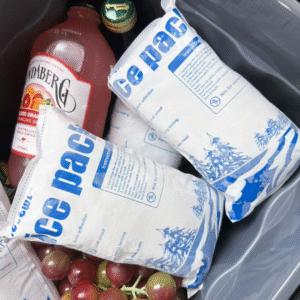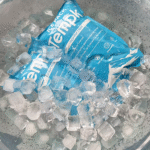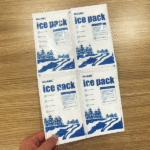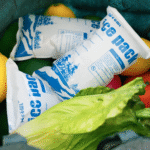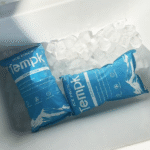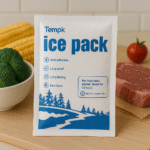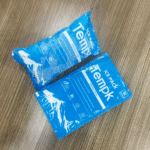Choosing the Best Dry Ice Packs & Supplier for Efficient Cold Chain Shipping in 2025
Cuando envía bienes sensibles a la temperatura, maintaining a consistent cold chain is critical. Dry ice packs are the most reliable solution for preserving frozen products during transit. Si está enviando comida, productos farmaceuticos, u otros bienes perecederos, understanding how to choose the right dry ice supplier and the best type of dry ice pack can ensure safe and efficient delivery. En esta guía, we’ll cover everything from types of dry ice packs to supplier selection, pricing considerations, and safety tips.
-
Understand the different types of dry ice packs and their applications.
-
Learn how to select the best dry ice supplier para tus necesidades.
-
Compare dry ice packs with other cooling solutions, like gel packs and PCM.
-
Discover how to safely handle, almacenar, and ship with dry ice.
-
Stay ahead of market trends and regulatory changes in 2025.
H2: What Are Dry Ice Packs and Why Are They Essential?
Dry ice packs are solidified carbon dioxide (Co₂) that sublimate at ultra-low temperatures, making them perfect for shipping frozen items. A diferencia del hielo tradicional, dry ice doesn’t leave any water residue, ensuring your products stay dry and properly cooled. This section breaks down the key reasons to use dry ice:
Benefits of Dry Ice Packs:
-
Ultra-Cold Cooling: Dry ice reaches temperatures as low as -78.5°C, ideal for products that require freezing.
-
Sin residuos de agua: A diferencia del hielo normal, dry ice sublimates into gas without leaving moisture behind, preventing water damage to goods.
-
Duración de enfriamiento más larga: Dry ice lasts much longer than ice, which helps reduce the risk of temperature excursions during long shipments.
H3: ¿Cómo funcionan las paquetes de hielo secos??
El hielo seco sublimate, turning directly from solid to gas without going through a liquid phase. This makes it ideal for shipping goods over long distances, where extended cooling is required. The sublimation process of dry ice ensures a constant supply of cold air without the mess of melting water. Dry ice works by absorbing heat from its surroundings, maintaining the required temperature for perishable goods, and ensuring their safety during transit.
| Type of Dry Ice | Duración del enfriamiento | Mejor para | Aplicaciones |
|---|---|---|---|
| Dry Ice Blocks | 48-72 horas | Long-distance shipping | Productos farmacéuticos, large food shipments |
| Pellets de hielo seco | 24-48 horas | Enfriamiento rápido | Laboratories, suministros médicos |
| Dry Ice Sheets | 12-24 horas | Small-scale, precise cooling | Perishable food packaging, artículos sensibles |
H2: How to Choose the Right Dry Ice Supplier?
Consideraciones clave:
Selecting a reliable dry ice supplier is crucial to ensure that you get high-quality products and services that meet your shipping needs. Here are the key factors to keep in mind:
-
Product Quality: Ensure the supplier offers food-grade dry ice that meets FDA standards, with CO₂ purity of at least 99.9%.
-
Variety of Packaging Options: Look for suppliers that offer a range of sizes and types, such as blocks, bandear, or sheets, to match your specific needs.
-
Delivery and Shipping Capabilities: Choose a supplier that can provide timely delivery with insulated packaging to prevent sublimation during transport.
-
Customer Support and Compliance: A good supplier will help you navigate regulations, provide the necessary labels (p.ej., UN1845), and offer training if needed.
Top Dry Ice Suppliers to Consider:
-
Linde Gas – Global supplier with a range of dry ice products, reliable delivery, and quick shipping.
-
Airgas – Offers dry ice in blocks, bandear, and sheets with fast delivery options.
-
CryoPort – Specializes in custom solutions for temperature-sensitive logistics, particularly for pharmaceuticals.
H2: How Much Do Dry Ice Packs Cost?
The price of dry ice packs can vary depending on the quantity, tamaño, y ubicación. De término medio, dry ice costs between $1 y $3 por libra. Sin embargo, other factors, such as shipping fees and packaging, can add to the total cost. To reduce expenses, consider buying in bulk, establishing long-term contracts with suppliers, and optimizing your packaging to minimize waste.
| Factor | Cost Impact | How to Save |
|---|---|---|
| Volume and Quantity | Bulk orders usually lower price per pound | Buy in bulk or negotiate long-term contracts |
| Distancia de envío | Longer distances increase cost | Choose regional suppliers for quicker shipping |
| Embalaje | Special packaging increases costs | Use optimized insulation to reduce sublimation losses |
H2: Dry Ice vs Gel Packs vs PCM: Which Coolant Is Right for You?
En 2025, several alternatives to dry ice are gaining popularity, including gel packs and phase-change materials (PCM). Here’s a comparison to help you decide which option best suits your needs:
-
Hielo seco: Ideal for ultra-cold conditions (−78.5 ° C), best for long-distance or international shipments. Requires special handling and is regulated as hazardous material.
-
Paquetes de gel: Best for chilled items (2°C–8°C), reutilizable, and non-hazardous. Good for short-term shipments but may form condensation during thawing.
-
Materiales de cambio de fase (PCM): Flexible temperature options (−21°C to −15°C), reusable up to 30 ciclos, and non-regulated. Ideal for sensitive items and sustainable shipping solutions.
| Coolant Type | Rango de temperatura | Costo | Duración | Reutilizabilidad | Hazmat Regulations |
|---|---|---|---|---|---|
| Hielo seco | ~−78.5°C | Alto | 24-72 horas | De un solo uso | Sí |
| Paquetes de gel | 0°C–8°C | Bajo | 24-48 horas | Reutilizable | No |
| PCM | −21°C to −15°C | Moderado | Arriba a 48 horas | Reutilizable | Usually No |
H2: Safety and Storage Guidelines for Dry Ice Packs
Handling and storing dry ice correctly is essential to avoid risks such as frostbite or suffocation from CO₂ gas buildup. Follow these guidelines for safe handling and storage:
-
Usar equipo de protección: Always use insulated gloves and tongs when handling dry ice.
-
Store in Ventilated Areas: Dry ice should be stored in a cooler with vents to allow the CO₂ gas to escape safely.
-
Avoid Contact with Products: Ensure that dry ice is properly insulated to prevent frostbite or damage to goods.
H2: Key Trends in Dry Ice and Cold Chain Logistics for 2025
As the cold chain logistics market continues to grow, several trends are shaping the industry:
-
Producción de hielo seco sostenible: Many suppliers are now producing dry ice from recycled CO₂, reducing their carbon footprint.
-
Embalaje inteligente: The rise of smart sensors and temperature monitoring systems enables real-time tracking of dry ice during transit.
-
Soluciones híbridas: Combining dry ice with gel packs or PCM is becoming a popular trend to optimize cooling efficiency while reducing CO₂ emissions.
Preguntas frecuentes
Q1: ¿Cuánto duran las paquetes de hielo secos??
Dry ice packs typically last 18-24 hours depending on the size and insulation. Larger blocks last longer.
Q2: Can I ship dry ice by air?
Sí, El hielo seco se puede enviar por aire., but special regulations must be followed, including labeling and packaging requirements.
Conclusión
Choosing the right dry ice packs and supplier is crucial for maintaining a reliable cold chain. By understanding the different types of dry ice, considering cost factors, and adhering to safety protocols, you can optimize your shipping operations and ensure that your temperature-sensitive goods arrive in perfect condition.
Llamado a la acción:
Listo para racionalizar la logística de la cadena de frío? Contact a trusted dry ice supplier today and explore the best solutions for your business needs.
Acerca de Tempk:
Tempk es un proveedor líder de soluciones sostenibles para la cadena de frío, offering high-quality dry ice products and tailored solutions for businesses across industries. With our expertise in logistics and temperature control, we ensure the reliability and safety of your shipments.






